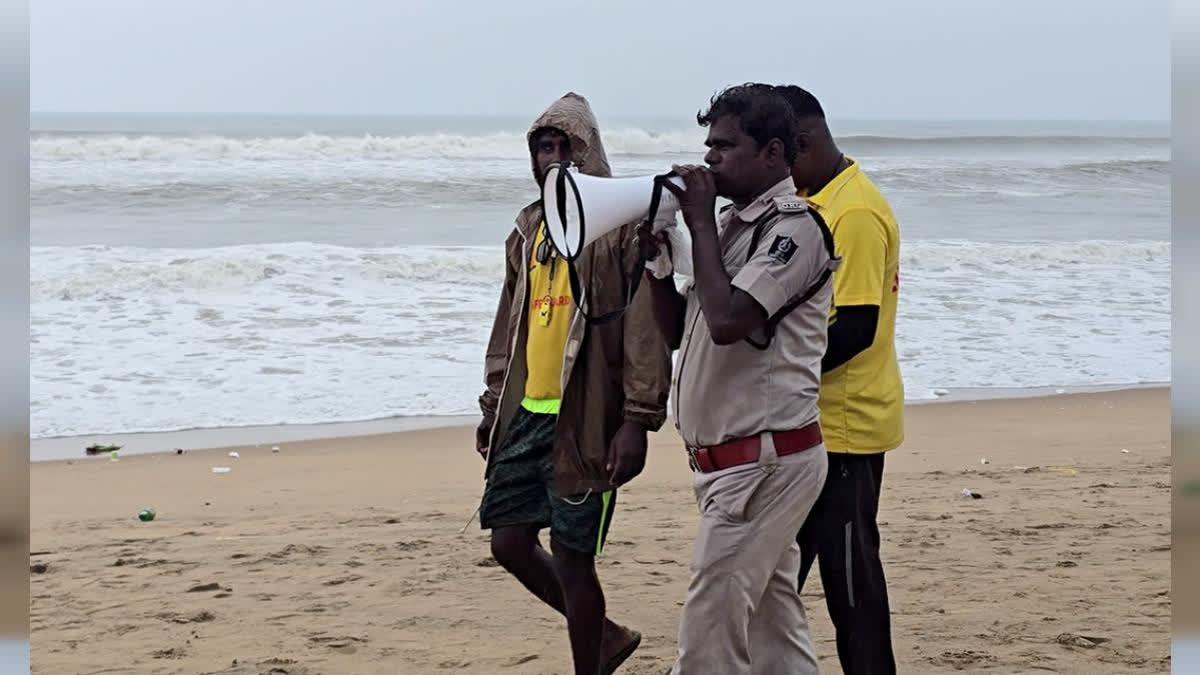Bhubaneswar: Odisha’s coastline, known for its scenic beaches, faces recurring marine disasters, primarily due to its geographical proximity to the Bay of Bengal. With a history of over 400 cyclones since 1890, Odisha continues to experience storms, including major ones like Phailin, Hudhud, Fani, and the 1999 Super Cyclone, which claimed 10,000 lives. Experts attribute the frequent cyclones to complex atmospheric and geographical factors.
According to IIT Bhubaneswar expert, Assistant Professor Sandeep Patnaik a combination of warm, dry air from northwest India and moist air from the Bay of Bengal creates low-pressure systems, making the Odisha coast prone to cyclones. The temperature along Odisha’s rivers and the Chilika lake area further provides favourable conditions for storms to intensify and make landfall.
Assistant Professor Dr Devadatta Swain explains that if a storm is large, it often veers towards Bangladesh, but smaller storms tend to hit Odisha due to its proximity and favorable atmospheric conditions. The Bay of Bengal’s unique positioning and partial influence from Pacific typhoons make it more turbulent than the Arabian Sea.
Professor Patnaik adds that cyclones are classified into pre-monsoon and post-monsoon storms, with post-monsoon cyclones frequently making landfall. The hot, dry air of the Arabian Desert weakens storms over the Arabian Sea, whereas the Bay of Bengal provides a conducive environment for stronger cyclones. Despite frequent natural disasters, Odisha has developed an effective disaster management strategy, strengthening its ability to respond to such challenges.
The Cyclones Odisha Has Braved So Far
Super Cyclone (1999)
• Severe Flood: Odisha first experienced a severe flood in August 1999, affecting seven coastal districts.
• Cyclonic Storm (October 17-18, 1999): A severe cyclonic storm hit the coastal districts, particularly Ganjam, causing widespread damage to life and property.
• Super Cyclonic Storm (October 29, 1999): Within 10 days, the state faced the devastating Super Cyclone that hit coastal districts, especially Jagatsinghpur, Kendrapada, Cuttack, Khurda, and Puri.
• Wind velocity reached 270 to 300 km/h at the landfall point near Paradeep.
• Torrential rains (447mm to 955mm) from October 29 to November 1 caused massive floods in Baitarani, Budhabalanga, and Salandi river basins, severely affecting districts like Jajpur, Bhadrak, Keonjhar, Balasore, and Mayurbhanj.
• The cyclone brought a tidal wave of 5 to 7 meters, ravaging several districts, cutting off communication, and disrupting power and water supply for over 48 hours, even in Bhubaneswar. Cyclones After 1999
• Phailin (October 12, 2013): A Very Severe Cyclonic Storm with wind speeds of 250 km/h made landfall near Gopalpur. Despite its intensity, the early warnings helped minimize casualties compared to the 1999 Super Cyclone.
• Hudhud (October 12, 2014): Hudhud made landfall in Andhra Pradesh, but it caused significant damage in Odisha as well, displacing 400,000 people. It was the first cyclone to cross Visakhapatnam in October since 1985.
• Titli (October 11, 2018): This Very Severe Cyclonic Storm crossed the coast between north Andhra Pradesh and south Odisha, impacting over 6 million people and causing 77 deaths. Gopalpur and Kalingapatnam experienced high wind speeds during the storm.
Cyclone Patterns
• Most major cyclones affecting Odisha occur in October and November, during the post-monsoon season.
• More depressions impact the Odisha coast in July and August.
Months of Impact:
• Severe storms are most frequent in June, July, September, and October.



